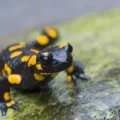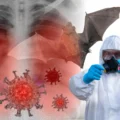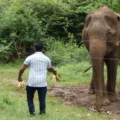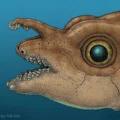When a global pandemic forced previous graduate student Devon Boland, Ph.D., out of the lab and onto the computer, he found a world of difference hidden in the long-studied species of Botryoccocus braunii — and discovered that it isn’t one species at all, but three.
Botryococcus braunii was first discovered in the mid-1800s. Technically a plant, it undergoes photosynthesis and, most interestingly to researchers, produces high amounts of hydrocarbons that can be used as a renewable source of fuel.
It was previously believed to be a single species with three races: A, B and L, which each produce slightly different types of oils. But after uncovering a dramatic 20-30% genetic difference between each race, a team of Texas A&M AgriLife researchers proposed a new classification — and completed any biologist’s dream of naming species.
“As a graduate student, you read papers that all say the same thing, that this is a single species with three chemical races, and you internalize it,” said Boland, first author of the study showing the genomic comparisons. “You start to think that must be right. No one has found otherwise, and all those scientists have had much longer careers than me — I’m just a kid.
“But I ended up getting to propose names for a species that were accepted for publication, which is something I never thought would happen.”
Half necessity, half circumstance
Before coming to Texas A&M, Boland spent his undergraduate research working on “bread and butter” biochemistry research in areas like protein engineering. His graduate thesis was meant to center around the production process Botryococcus braunii uses to synthesize its unique hydrocarbons.
But when the COVID-19 pandemic hit, Boland was worried about losing time on his thesis and the possibility of it delaying his graduation.
In response, Tim Devarenne, Ph.D., associate head of undergraduate programs and associate professor in the Department of Biochemistry and Biophysics at the Texas A&M College of Agriculture and Life Sciences, suggested that Boland take the opportunity to dive into genetic data and bioinformatics.
“Having the genome of your organism of interest mapped out is always ideal in research because it allows you to more easily find genes and work to determine their functions,” Devarenne said.
Another previous graduate student in the lab, Daniel Browne, had performed some sequencing and assembled the B race’s genome. During one of Devarenne and Boland’s weekly meetings, Devarenne proposed they try to do the same thing with the A and L race.
“It had a double benefit,” Boland said. “We were able to do something that hadn’t been done before, plus it could help us to better understand the hydrocarbon biosynthesis.”
Though the races are practically indistinguishable under the microscope, Boland said there had been some debate on whether these were different species. They were interested to know whether a genomic study could shine light on the question.
Along with Devarenne, Boland and Browne, the research team included Ivette Cornejo Corona, Ph.D., postdoctoral researcher in Devarenne’s lab; John Mullet, Ph.D., another researcher and professor in the Department of Biochemistry and Biophysics; Rebecca Murphy, Ph.D., a former graduate student in Mullet’s lab; and a longtime collaborator on Botryococcus studies, Shigeru Okada, Ph.D., a professor at the University of Tokyo in Japan.
Tim Devarenne, Ph.D., studies the biofuel properties of a common green microalga called Botryococcus braunii in his lab in the Department of Biochemistry and Biophysics. (Tim Devarenne, Kathleen Phillips/Texas A&M AgriLife)
Genetic analysis
Even though Botryococcus is commonly studied for its hydrocarbon production, sequencing its genome has proven difficult.
Devon Boland, Ph.D., a previous graduate researcher in Tim Devarenne’s lab, first discovered his love for bioinformatics when the COVID-19 pandemic forced him out of the lab. He uses bioinformatics everyday now in his role at the Texas A&M Institute for Genome Sciences and Society. (Texas A&M Foundation)
Boland, now an assistant research scientist at the Texas A&M Institute for Genome Sciences and Society, said the thick, oily medium the cells live in makes extracting and isolating the DNA a challenge.
Nonetheless, the team was determined to analyze the genomes to see the similarity between the genes and proteins involved in each race’s biofuel production processes.
But after piecing together the genomes and using the supercomputers at the Texas A&M High Performance Research Computing Center to run genomic comparisons, Boland said it became clear these organisms were not the same species.
“It was like everywhere we looked, things were different,” he said.
In the end, the researchers said around one in every five genes were unique to each of the Botryococcus races. To put that 20% difference in perspective, the genetic difference between humans and chimpanzees, our closest evolutionary relative, is less than 2%.
After some further validations, Boland and Devarenne set out to reclassify the Botryococcus races. Boland said the team spent months workshopping different names.
They kept race B with its original name of Botryococcus braunii to preserve its history and renamed race A to Botryococcus alkenealis and race L to Botryococcus lycopadienor, which signify the type of hydrocarbons each produces.
What makes a species
In the recent past, biologists have given more weight to genes and genomes when it comes to classifying organisms.
But even with all the evidence for these Botryococcus algae to be considered separate species, Devarenne said what really makes a species is the general acceptance by the scientific community.
After publishing their peer-reviewed study in PLOS One, Devarenne shared the team’s findings with over 100 other researchers who study the organisms in their own labs.
“How we define separate species might not change much with how these organisms are used in research,” he said. “But it’s important for the scientific understanding, how we think about the ways these organisms are related to each other and to all other species.”
Boland said he and Devarenne published in an open-access journal so that other scientists could build off their work. The complete genomes of the species are also available on the National Center for Biotechnology Information website.
“It was important to us that the information was publicly available when it was ready to publish,” he said. “Science is community driven. The ultimate goal is always to further our collective knowledge, and I think that’s what we accomplished here.”









No Comments
Leave a comment Cancel